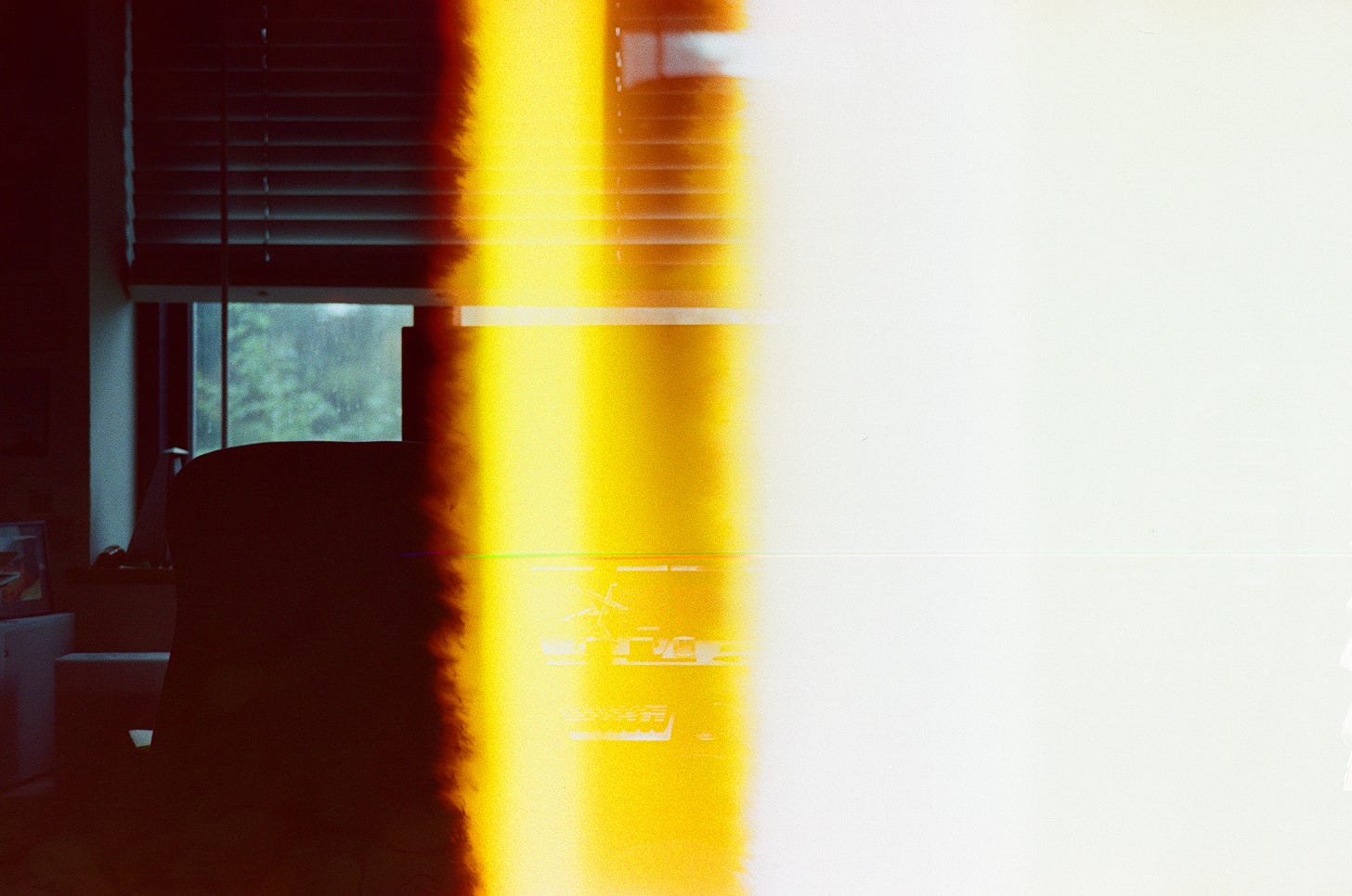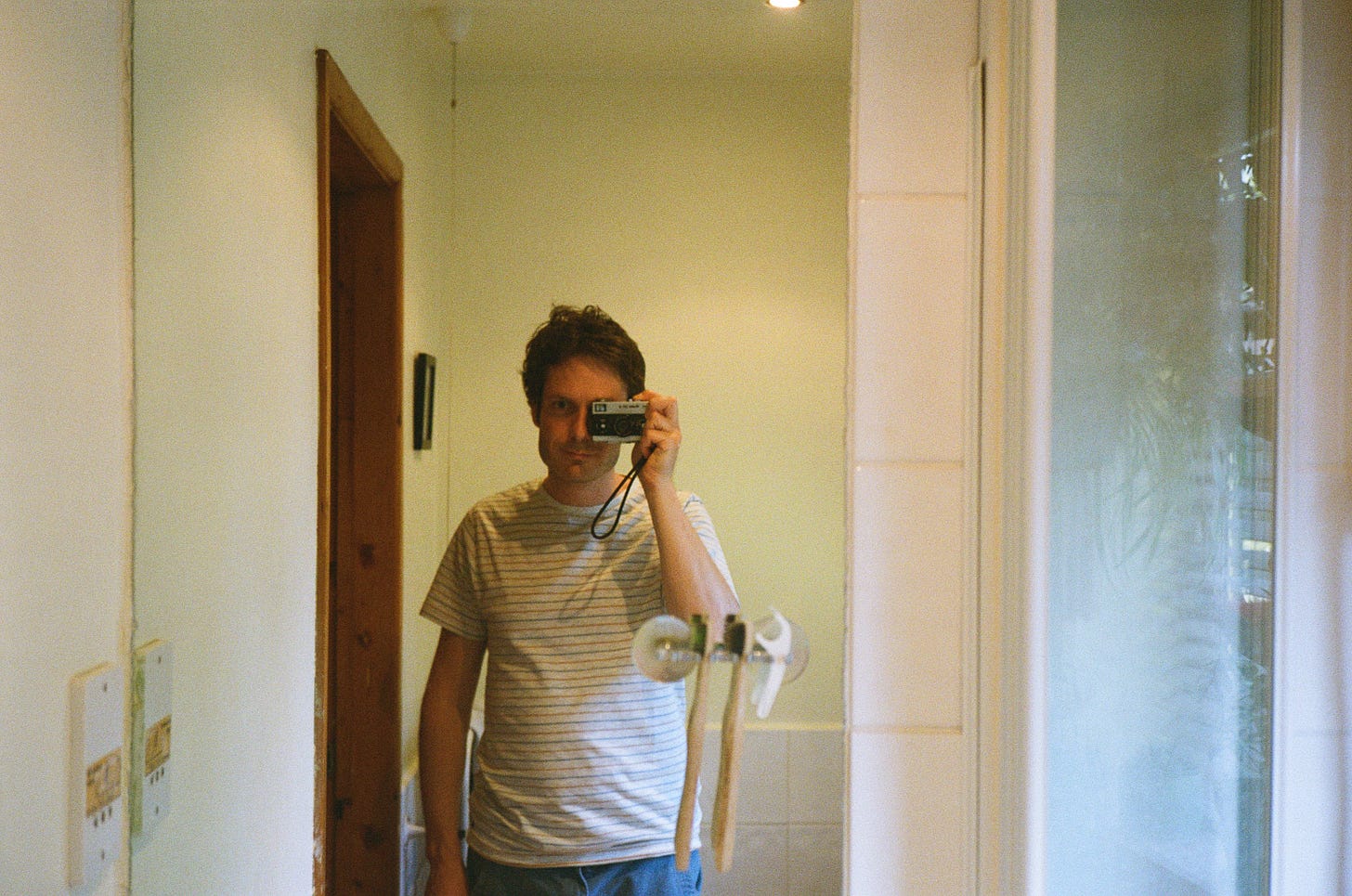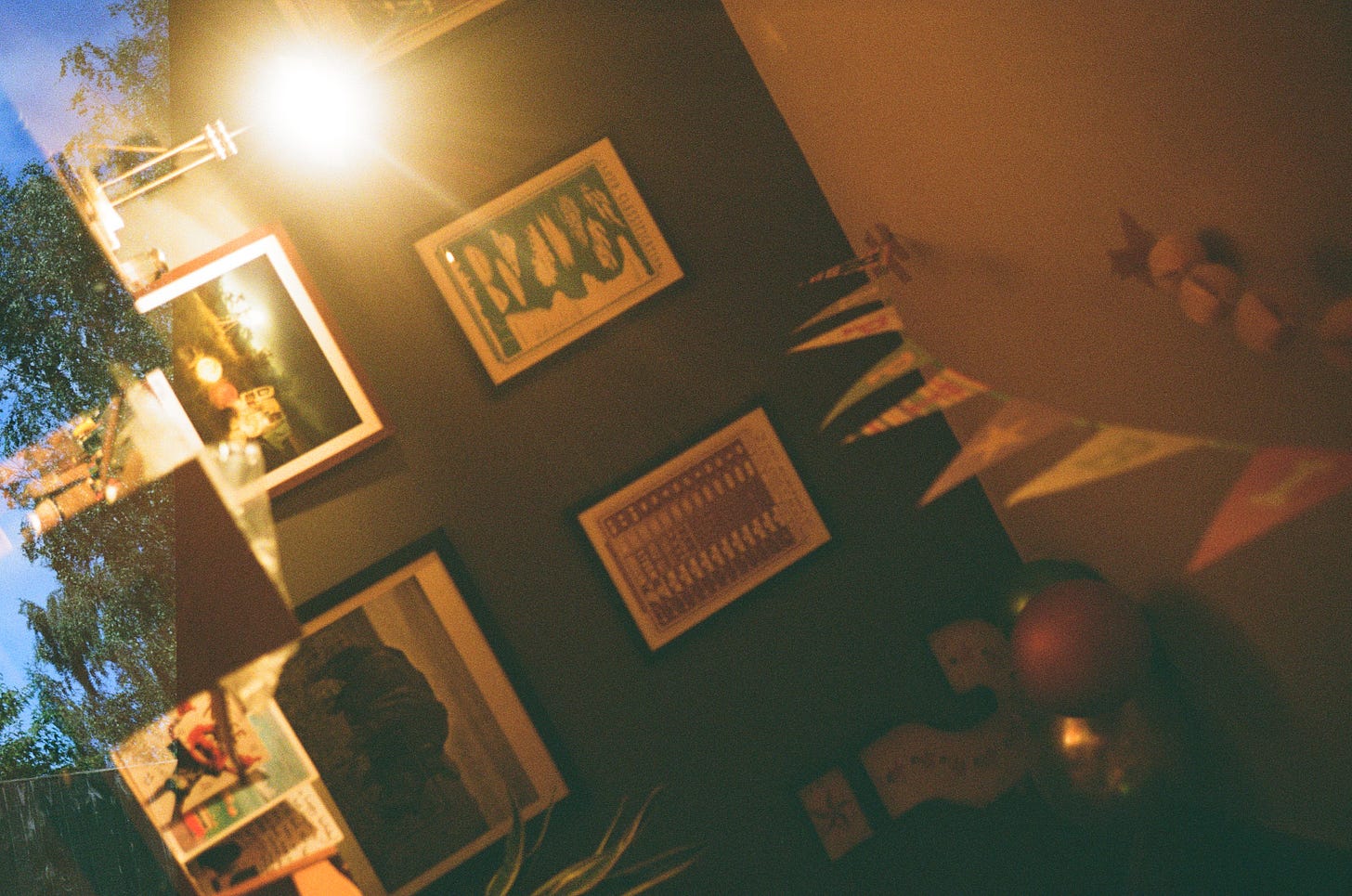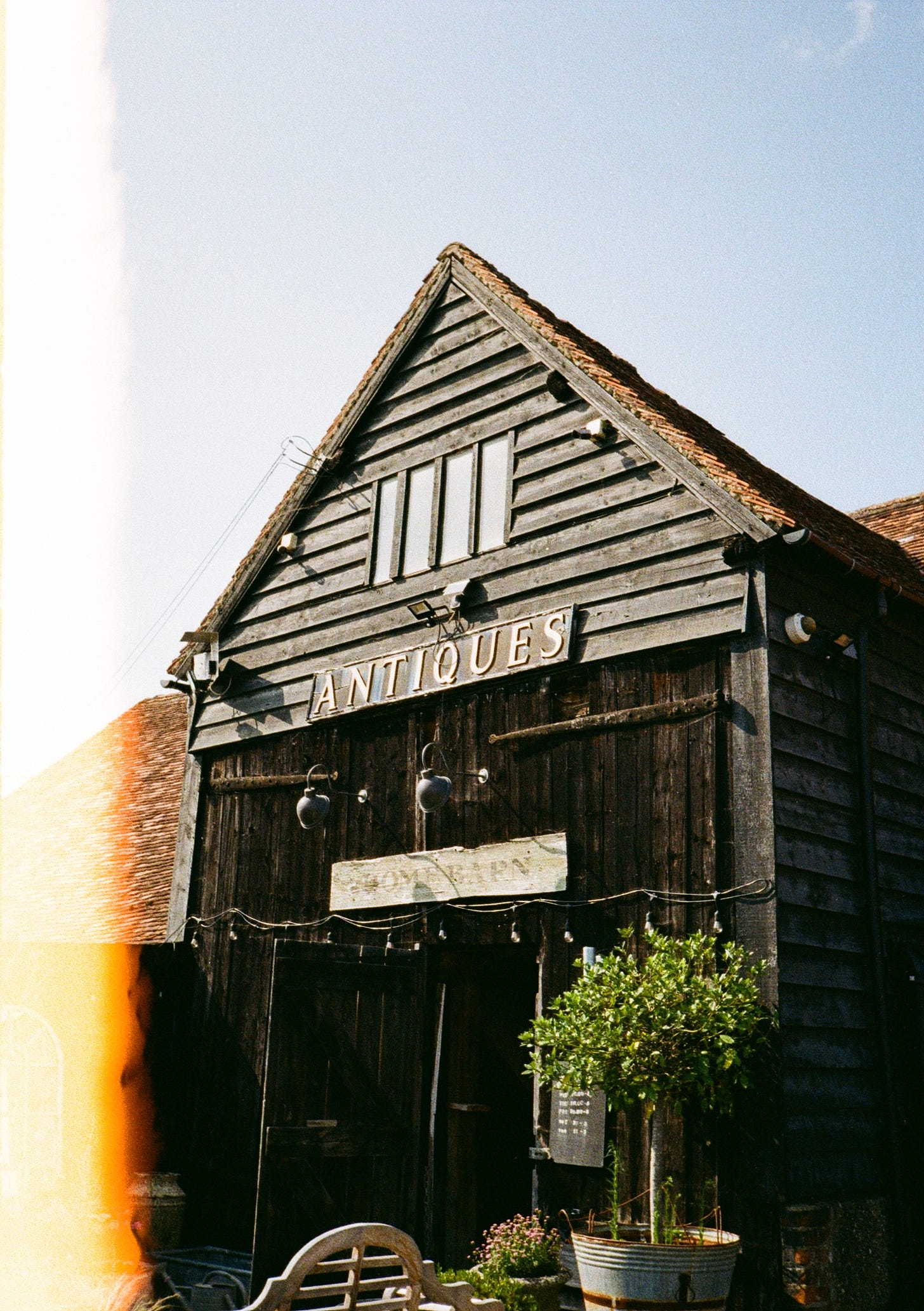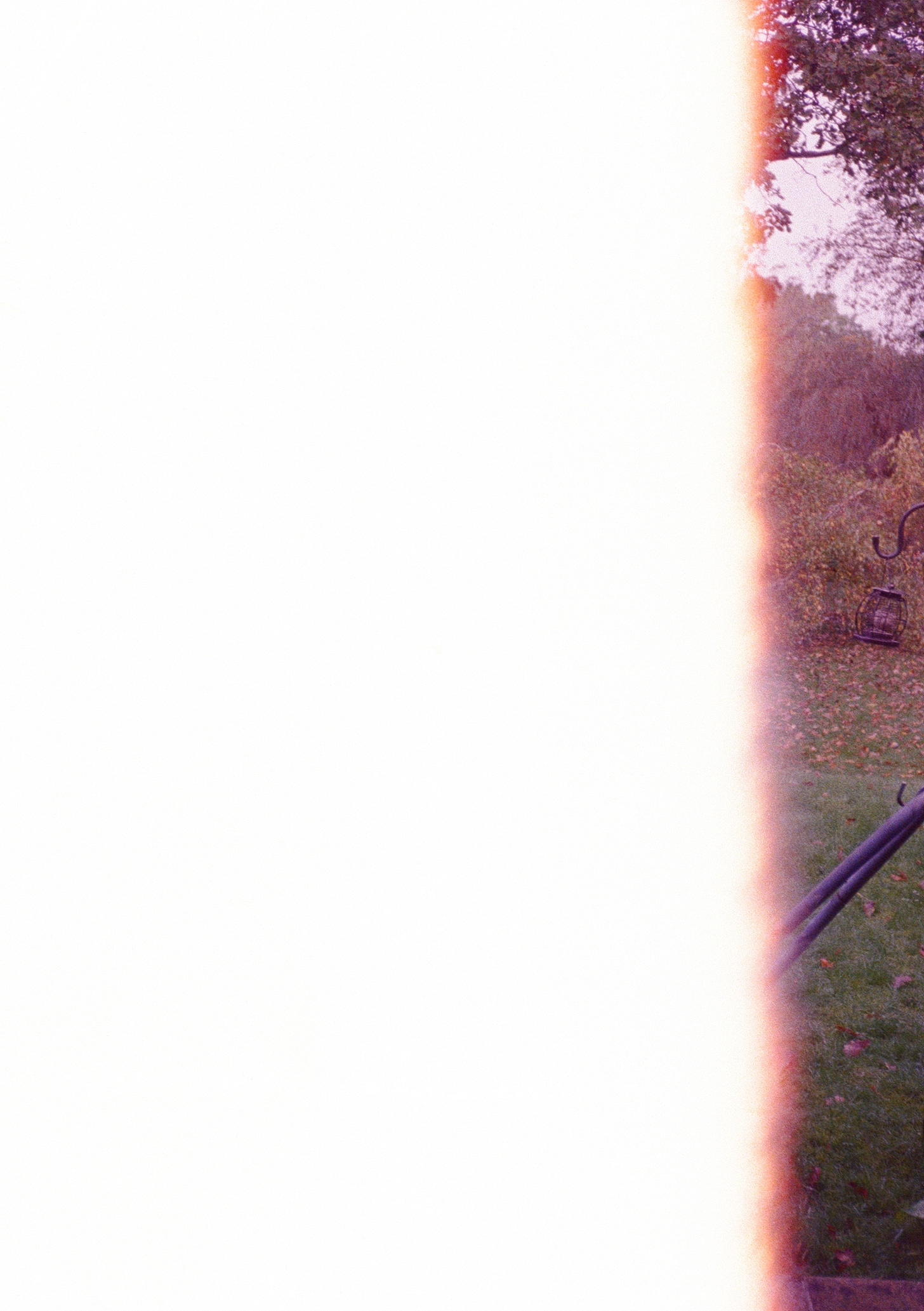This little essay is set in July of 2020, the UK. The initial horror and darkness of the pandemic had given way to longer, warmer days. Pubs and cinemas opened their doors again, and theme parks and swimming pools too. The second wave was on its way and Christmas would later be cancelled but I didn’t know that yet, and in my ignorance I had a fleeting, peaceful feeling that things were looking up.
Maybe that’s why I bought myself a birthday present that year. It’s uncharacteristic of me – I’m not sure I’ve done it before or since – but in July of 2020, the summer I turned 37, I was both the generous giver and gracious receiver of a Rollei 35S – a film camera from the 70s. I’m not a great photographer but I am an enthusiastic one, and I’d had my eye on a Rollei 35S for a while.
It’s a distinctive design and a dinky little thing – one of the most compact 35mm film cameras ever manufactured, so they say. It’s heavy to hold and tricky to focus, an enormously satisfying object to use. The shutter button clunks and the wind lever whirs and the lens extends and retracts. But the tactile joy of such analogue equipment often brings with it a responsibility to know roughly how it works, to have at least some understanding of what’s going on inside the box. I am a fool, and so I did not, and so I broke the camera on day one.
You have no obligation to know the inner workings of your smart phone – you cannot break the insides by pressing buttons in the wrong order – but the Rollei 35S is full of parts that twist and move. You have to pull out the lens before you press the shutter, and wind the film before you retract the lens. I did something out of sequence that first day, and as I pulled the wind lever I felt something inside the camera snap. The camera rattled when I shook it (not what cameras should do) and when I got the film developed I found shots like these.
You’ll see on the left where the film hasn’t fully wound, leaving a slice of my parents’ garden on the edge of my living room wall. By all objective measures it’s a terrible photograph. What am I even attempting to capture here? There’s no clear subject, no sense of composition. Just shapes among the grain.
And yet, in its abstractness, this photo contains the story of a day. The image is broken because the camera was, which reminds me of the morning I broke it, of a sunny breakfast at a riverside restaurant, my wife reassuring me that the camera would be fine, and me resisting the urge to sulk and claim the day was ruined.
On the left of the photo, a glimpse of a summer afternoon spent in my parents’ garden with family. The precise details elude me now, but there will have been food (there always is), and a sense of reunion in the midst of the pandemic, and nephews gleefully running amok, and cake and cups of tea.
In the rest of the photo, if I tilt my head, I see birthday cards on the table, banners on the ceiling, and the balloons my wife has blown up for me. I see glimpses of the effort others have put in to make the day feel special. I can picture my cat curled up in his blanket. I get a feeling of returning home.
Morning, afternoon, evening – a single image that spans a day. I could never have sought that result deliberately, or have known the outcome before I got the film developed. Such is the joy of the analogue. If you can’t delete or undo at your whim, the accidents are permanent. You sit with them for longer than you otherwise would. You contemplate them more.
My little Rollei has since been fixed, and I own other film cameras now too, but I occasionally get similar accidents from early test shots, like the header image for this essay, and like the one below.
What’s going on in these images then? Well, loading a film camera means pulling a strip of film from the canister on one side of the camera to the winding gear on the other, exposing it to light in the process. What you’re seeing in these images is the meeting point between the film that was exposed to the light and the film that remained in the darkness. If the winding process aligns a shot between these two states, and if the shutter fires to catch it, you get one of these little demi-pics.
I’ve found it difficult to predict which rolls of film, which cameras, will collect such slices of light. Maybe they’re a result of the gears not fully engaging with the eyelets in the film, since I suspect if the camera is working perfectly (or if the user fully understands how to use it) the first shot will always be full. I think it’s also likely that whether I see such images is at the discretion of whoever develops and scans the negatives. The value of an image is, after all, entirely a matter of taste.
In general, whenever you load a new roll of film, you click and wind, click and wind – two shots of nothing and then the roll is ready. Even so, I’ve developed the habit of always pointing the camera at something for those first shots of the roll. I don’t worry about what I point the camera at – whatever’s nearby, it’s not too important, and there’s no way of knowing the outcome. Maybe I’ll capture a piece of something interesting, or maybe it’ll be nothing at all, or maybe whoever sees it won’t think it’s worth their while. But I point the camera anyway and I push the button regardless.
Click and wind, click and wind.


